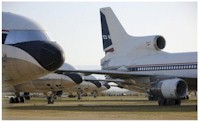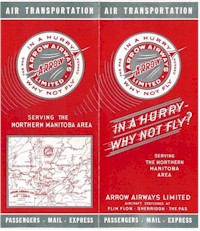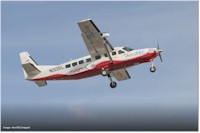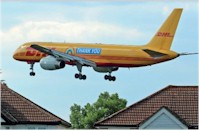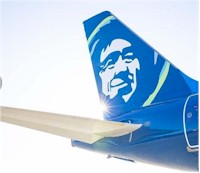 Name this airline – answer in Terry's Trivia below. Name this airline – answer in Terry's Trivia below. |
|
Airliner graveyard.
Aircraft storage yards report a big spike in the number of planes. Some of them have been mothballed by airlines struggling to manage the double whammy of volatile fuel prices and the tanking economy, and the odds are good many of them will never fly again. Call it a sign of the times for the beleaguered airline industry. One place seeing a bump in business is Evergreen Maintenance Center at Pinal Air Park in southern Arizona. There are 185 aircraft there now, and company president Jack Keating expects another 27 by the end of the year. He says he hasn't seen numbers like that since the months after the September 11, 2001 terror attacks. Once parked, a lot of the planes get Canyon Ranch spa-like treatment. The crew at Evergreen drains the fluids then covers the windows, engine inlets, tires and landing gear with Mylar. Planes are towed around the lot once a month to keep the tires in good shape. It's a similar drill at the military boneyard at Davis-Monthan Air Force Base. The engines are filled with heavy oil to protect them, and all the openings are sprayed with a white latex-based coating called Spraylat to deflect some of the heat and keep the wind, dust and vermin at bay. We're probably all lucky that some of the old birds sitting in those graveyards aren't being pressed back into service. But for those of us who love aviation, there's something a little bit sad about row after row of aging aircraft sitting in the desert, all but forgotten. (Source: www.wired.com/2009/03/airplane-gravey) |
|
Canada's Aircraft Industry. Aviation Week & Space Technology 100+ Year Archives, April 1, 1938 The Canadian aircraft industry is being groomed to become once again an important source of supply for Great Britain in case of a European war. Once before the mother country relied on Canada to supply the wings of war. During the World War hurriedly assembled airplane manufacturing plants at Toronto produced 2,900 two place fighters for European war zones. This summer practically every one of the 10 Canadian airplane manufacturing companies will be starting production of entire or parts of military airplanes for the British Air Ministry and the Royal Canadian Air Force. In the summer of 1938, a British Air Mission toured Canada and conferred with aircraft manufacturers, financiers and the Canadian government. As a result, initial orders have been placed with individual companies and with a specially formed syndicate for the production of fighting airplanes to ascertain how speedily the Canadian aircraft industry can build military machines. If production this year and next comes up to expectations, orders for more advanced airplanes are expected. (Source: aviationweek.com, April 8, 2020 Additional Reference: www.veterans.gc.ca) |
|
Here we have the timetable issued November 1,1939. (Source: from the collection of Bjorn Larsson) |
|
The 30-minute flight took place at the AeroTEC Flight Test Center, which is located at Grant County International Airport (MWH) in Moses Lake, Washington. According to magniX, the eCaravan is currently the world’s largest all-electric commercial aircraft. (Source: avweb.com June 1. 2020 and www.aerotec.com) |
|
(Source: flightglobal.com Note: Registration required to view archives) More info at DHL.com |

